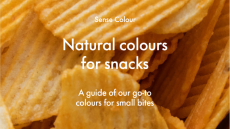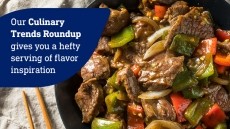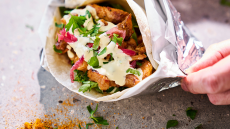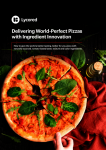Peruvian berry offers natural pigments for yoghurt: study
source of pigments that could naturally colour products like
yoghurts and replace synthetics, suggests new research from the US.
Researchers from the Ohio State University added ground whole dried seeds of the berry to a yoghurt, producing a product with "a bright, stable, and acceptable colour," they report in the Journal of Food Science. "The addition of ground whole dried seedless B. boliviana berries rich in anthocyanins achieved colour characteristics similar to synthetically coloured commercial brand blueberry yogurt with improved stability for commercial applications in the food industry as compared to betalaines," wrote T.C. Wallace and M.M. Giusti. "Because of the unusually high concentration of monomeric anthocyanins in the B. boliviana dried berries, there was no need for industrial extraction of the pigment to produce a bright, stable, and acceptable colour in yogurt systems." Confronted by growing consumer demand for natural and healthy foodstuffs, food makers have increasingly been looking for alternatives to artificial food colours. Market figures confirm the trend. While the European colouring market faces an annual growth rate of just 1 per cent between 2001 and 2008, the colouring foodstuffs market is ripping ahead on growth of 10 per cent to 15 per cent. Rich source of pigments According to the Ohio-based researchers, the Peruvian berry is a rich source of anthocyanin pigments, containing between seven and eight percent anthocyanins in the non-acylated form. Black raspberries, in comparison, contain about 0.9 per cent, they said. "Incorporation of whole berry powder from this species into food matrices could potentially eliminate the current need for anthocyanin industrial extraction." Previous research has reported that, while the non-acylated form of the pigments is less stable, it is more bioavailable, according to animal studies. By incorporating the pigments as a powder form of the berry, the researchers suggest that the stability of the non-acylated forms can be improved, thereby removing the need for industrially extraction and acylation. Testing the pigments Wallace and Giusti prepared powder from the berry, rich in non-acylated anthocyanins, and added it to yoghurt samples of three different fat levels (zero, two and four per cent fat). The samples were stored for eight weeks, and subsequently compared to yoghurts prepared coloured using acylated anthocyanins from purple carrot, betalaines from red beet, or FD&C Red nr 40. They report that the colour of yoghurt containing the Peruvian berry anthocyanins at a concentration of 20 mg per 100 g yoghurt was similar to that observed in a commercial blueberry yogurt. Moreover, the fat content of the yoghurt did not appear to influence the colour or stability of the B. boliviana pigments. On the other hand, the acylated anthocyanins from purple carrot had a higher stability when formulated in higher fat yoghurts. "Because the shelf life of yogurt is between 25 and 35 days, anthocyanin pigments from both purple carrot extracts and B. boliviana may be used in the colouring of yogurt, offering a potential for a health benefit to the consumer," they concluded. The study was funded by Tinker Field Grant and IFT Foundations. Push for naturals Various published studies have caused many consumers to be concerned about the consumption of synthetic colour additives, according to industry experts. To its credit, the industry has produced guides on how to move away from additives at a time when the safety aspect of such products have been scrutinized. In the UK food and beverage manufacturers committed themselves to removing six colour additives from their products by the end of 2008. The Southampton study also presented evidence that artificial colorants increased hyperactivity in children. The six colours are sunset yellow (E110), tartrazine (E102), carmoisine (E122), ponceau 4R (E124) quinoline yellow (E104), and allura red (E129). Source: Journal of Food Science (Blackwell Publishing) Published online ahead of print, 29 March 2008, doi: 10.1111/j.1750-3841.2008.00706.x "Determination of Color, Pigment, and Phenolic Stability in Yogurt Systems Colored with Non-acylated Anthocyanins from Berberis boliviana L. as Compared to Other Natural/Synthetic Colorants" Authors: T.C. Wallace and M.M. Giusti




















